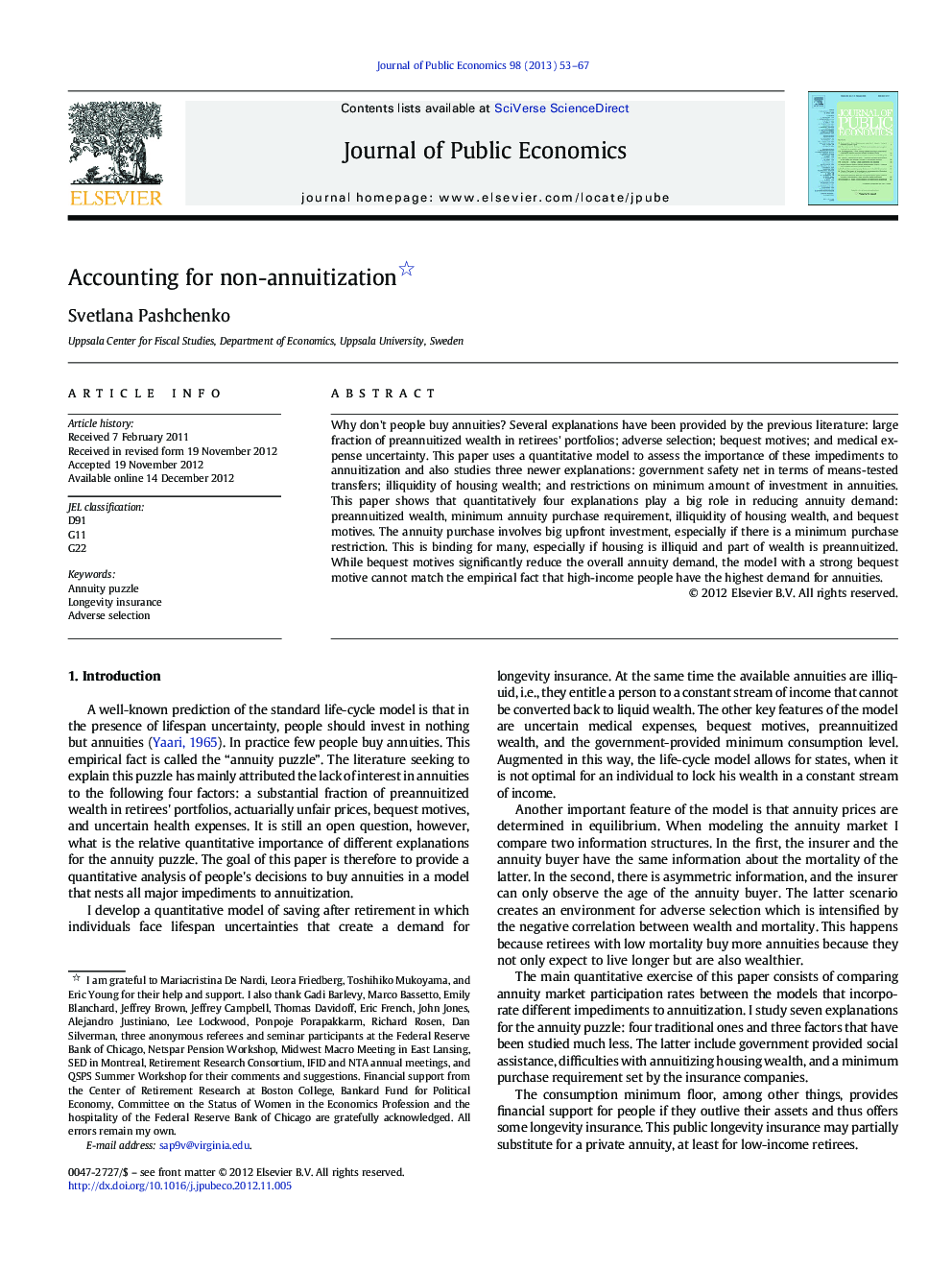| Article ID | Journal | Published Year | Pages | File Type |
|---|---|---|---|---|
| 969886 | Journal of Public Economics | 2013 | 15 Pages |
Why don't people buy annuities? Several explanations have been provided by the previous literature: large fraction of preannuitized wealth in retirees' portfolios; adverse selection; bequest motives; and medical expense uncertainty. This paper uses a quantitative model to assess the importance of these impediments to annuitization and also studies three newer explanations: government safety net in terms of means-tested transfers; illiquidity of housing wealth; and restrictions on minimum amount of investment in annuities. This paper shows that quantitatively four explanations play a big role in reducing annuity demand: preannuitized wealth, minimum annuity purchase requirement, illiquidity of housing wealth, and bequest motives. The annuity purchase involves big upfront investment, especially if there is a minimum purchase restriction. This is binding for many, especially if housing is illiquid and part of wealth is preannuitized. While bequest motives significantly reduce the overall annuity demand, the model with a strong bequest motive cannot match the empirical fact that high-income people have the highest demand for annuities.
► I examine seven explanations for the annuity puzzle in the unified framework. ► Among those considered, four explanations are traditional and three are relatively new. ► I construct a quantitative model of savings after retirement. ► Annuity prices are determined in equilibrium. ► I identified four factors with a large quantitative impact on the annuity demand.
